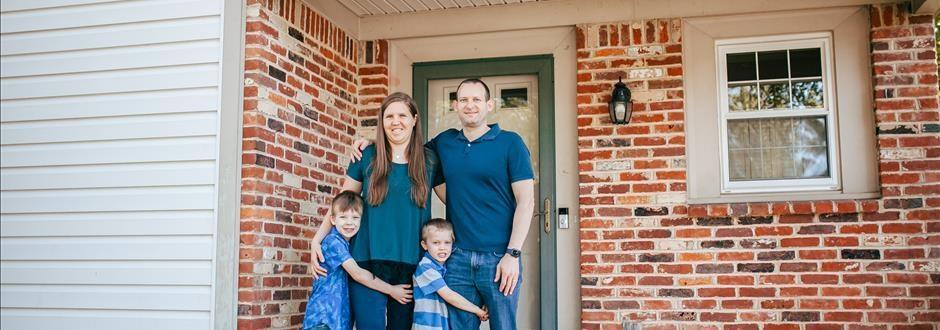Whatever your current mortgage rate may be, you’d probably be happy to lower it. A lower interest rate means a more manageable payment every month as you pay your home loan. And that’s money you can save for investing, emergency funds, paying off debt, home renovations, or anything else you need.
Look below for 10 smart ways to lower your interest rate so you can take control of your finances. Please remember that if you refinance your mortgage, you may pay higher finance charges over the life of the loan.
1. Get Multiple Mortgage Rate Quotes
Compare quotes from several lenders to learn about current interest rates and terms available in the market. This allows you to compare and identify the most favorable terms for your financial situation. Additionally, having multiple mortgage offers provides you with some negotiating power. Lenders may be more willing to adjust terms or rates to compete with other offers. You’ll then be able to find the lender with the most competitive rates and fees, thus maximizing the savings on your interest rate.
2. Improve Your Credit Score
Experts recommend you have a credit score of 620 or higher (or 640 for a VA Home Loan) when you apply for a mortgage. If your score is below 620, lenders will either offer higher interest rates or won’t approve your loan. So, it pays to improve your credit score before applying for a home loan.
Credit scores are calculated using the information in your credit report, which is maintained by the credit bureaus (TransUnion, Equifax, and Experian). Check them to make sure there are no red flags on your report. By law, you can request a free copy of your credit report annually by visiting AnnualCreditReport.com. You can dispute any errors you find by going to that credit bureau’s website. Be sure to keep copies of all documentation you send.
If your credit score is on the low end, AAFMAA Mortgage Services LLC (AMS) may be able to help you develop short- and long-term credit-building goals to improve your situation to get you mortgage-ready.
3. Increase Your Down Payment Amount
Lenders will offer better rates to borrowers with a substantial (20% or more) down payment. If you can’t get to 20%, there are resources available to help you.
First, Down Payment Resources has a database of more than 2,000 programs to help with your down payment and closing costs. Some programs are for first-time buyers only, usually defined as someone who has not owned a home in the past three years. However, this requirement is often waived for servicemembers and Veterans.
Another way to boost your down payment is by taking out a second mortgage at the same time as your primary (purchase) mortgage. Second mortgages are often used by borrowers who want to put 20% or more down. You’re required by law to disclose a second mortgage to your original lender before closing.
4. Carefully Consider Your Loan Terms
You have two primary options when choosing the terms of your loan: short-term and long-term loans. Short-term loans are generally repaid in 1-2 years, while long-term loans are repaid over a longer period.
When deciding between long-term and short-term loans, consider the differences in interest rates and the associated trade-offs. Short-term loans typically come with higher monthly payments due to the condensed repayment period, but they often have lower overall interest charges. However, the total cost of long-term loans may be higher since they incur more interest charges over time. The "right" loan term depends on your situation and financial goals.
5. Use an Adjustable-Rate Mortgage
For those planning to move again soon, an Adjustable-Rate Mortgage (ARM) can offer potential benefits. ARMs typically start with a lower introductory interest rate than fixed-rate mortgages, leading to lower initial monthly payments. The interest rate on an ARM may then adjust after an initial fixed period, often three to ten years, based on market conditions. It’s then adjusted up or down an average of every six months.
As ARMs have a fixed interest rate for an initial period, borrowers can save on monthly payments and reduce overall loan costs. However, consider the possibility of higher rates in the future, which might lead to increased payments.
6. Pay Mortgage Points
Another popular way to lower your interest rate is to pay points (called discount points) directly to the lender at closing. Points are calculated as a percentage of the total amount of your loan. One point equals one percent of the loan amount. Generally speaking, paying one percent of the loan amount in points will lower your rate by 0.25 percent. So you’re paying one percent upfront to pay a quarter of a percent less per year in interest.
For example, assume you’re applying for a mortgage of $100,000. One percent — or one point — of the loan value is $1,000. If you calculate at least $1,000 in reduced interest payments, it’s worth paying for that point. Use our free calculator to see if paying points makes sense for you.
Knowing how long you intend to keep the loan can also help you weigh the value of paying discount points. If you plan to relocate in less than three years, you probably won’t recoup the cost of paying points. Paying points probably makes sense if you’ll be in your home for 5 years or more.
7. Request a Temporary Buydown
A temporary buydown is when the seller pays an upfront fee to reduce the interest rate on a mortgage for a certain period, usually up to three years. Buydowns can only be paid by a seller or builder, not by the lender or borrower.
Buydowns are great for military homebuyers for several reasons. First, as interest rates rise, your lower rate for the first years of your mortgage will save you money. In addition, if you anticipate a PCS move within three years, you may want to sell or refinance the loan. In that case, any unused buydown funds are credited against the loan payoff.
There are certain restrictions and eligibility requirements for temporary buydowns, so make sure you understand the terms before you sign an agreement.
8. Use Seller Concessions
Seller concessions involve the seller agreeing to contribute toward the buyer's closing costs to reduce the buyer’s financial burden. These concessions can include property taxes, attorney fees, appraisal costs, origination fees, title insurance, and discount points. This makes homeownership more accessible for those with limited funds for upfront costs.
Seller concessions are negotiable and vary based on the agreement between buyer and seller. While they offer a financial advantage to the buyer, navigate this option carefully so you know what you are — and aren’t — getting from the seller.
9. Lock In Your Mortgage Rate
A rate lock is an agreement between you and your lender that guarantees a specific interest rate for a defined period. The period is typically 30, 45, or 60 days — sometimes longer.
Rate locks act as protection against increased interest rates before closing. This ensures that, even if market rates rise during the lock period, you will still pay the lower, locked rate. However, note that the opposite is also true. If market rates decrease during the lock period, you’re committed to the higher lock rate.
In an otherwise fluctuating market, this financial strategy provides stability and predictability. Before locking a rate, look at market trends and consult with your lender to see if this is a good option for you.
10. Consider Refinancing Your Mortgage
Refinancing may give you the opportunity to secure a lower interest rate, resulting in reduced monthly mortgage payments. This is particularly advantageous when market interest rates are lower than your current mortgage rate. Or, you may want to refinance to get additional cash out for debt consolidation or home improvements. AAFMAA’s refinancing calculator can help you decide whether this strategy is good for you. Here are some additional things to know about refinancing your mortgage:
Shorter Payoff Term
A shorter loan term during refinancing can lead to a quicker payoff of your mortgage. While monthly payments may increase, this approach can save you substantial interest over the life of the loan.
Eliminate Private Mortgage Insurance
If your home's value has increased since the initial purchase and/or you have paid down the principal amount of your mortgage, refinancing can help eliminate the need for private mortgage insurance (PMI). Not paying PMI can significantly reduce your monthly mortgage payments.
Refinance for Cash Out
Consider a cash-out refinance to access the equity in your home. This option allows you to borrow more than your existing mortgage balance. These funds can be used for home improvements, debt consolidation, or other financial goals.
Adjustable-Rate to Fixed-Rate
Refinancing Switching from an adjustable-rate mortgage to a fixed-rate mortgage can protect you from potential interest rate hikes in the future. This works best if you’re confident that mortgage rates will be going up and you plan to stay in your home for a while.
Compare Your Mortgage Options
Military Mortgage Advisors from AAFMAA Mortgage Services ensure military families from first-time homebuyers to Veterans get the mortgage that best fits their needs. Request your free mortgage assessment today.
This article was originally published June 12, 2019.
Refinancing your existing mortgage may increase the finance charges you pay over the life of the loan.


.png)


.webp)